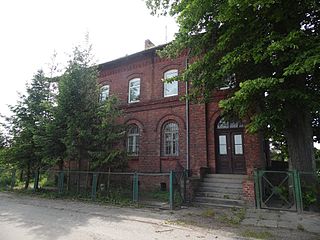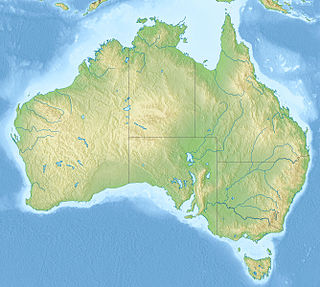 W
WThe Azilal Formation, also known as Toundute Continental Series and Wazzant Formation, is a geological unit in the Azilal & Ouarzazate provinces of the High Atlas of Morocco, that cover the middle Toarcian to early Aalenian stages of the Jurassic Period. It is a terrestrial deposit which overlies marine dolomites of equivalent age to the Budoš Limestone of Montenegro or the Marne di Monte Serrone of Italy. Dinosaur remains, such the Sauropod Tazoudasaurus and the Basal Ceratosaur Berberosaurus are known from the unit, along with several undescribed genera. The Units inside the group have been considered individual on the past, being a division of the so-called "Couches rouges", and subdivided by a supposed geological scale. The strata of the group extends towards the Central High Atlas, covering different anticlines, and topographic accidents along the range of the Mountains. Although new studies have suggested that the strata is coeval in age, and should be referred to as a unique unit. The Group is believed to have been a mostly deltaic, and river channels filled a succession of seashore and inland environments, covering the late Liassic coast of modern northern Africa. Based on observed halokinetic strata, the Tazoult Ridge evolved as a Salt Wall forming a 20 km long NE-SW trending structural and sedimentary high for at least 20 million years, between Pliensbachian-Bajocian periods. This emerged small landmass generated a great local Diapir, with continuous Diapirism until the end of the Aalenian.
 W
WThe Bagå Formation is a geological formation dating to around 199 to 170 million years ago, in the Early and Late Jurassic. It is located on the island of Bornholm, Denmark.
 W
WThe Beacon Limestone Formation, historically known as the Junction Bed, is a formation of early Jurassic age (Pliensbachian–Toarcian). It lies above the Dyrham Formation and below the Bridport Sand Formation. It forms part of the Lias Group. It is found within the Wessex Basin and parts of Somerset, in England. It is well known for the Strawberry Bank Lagerstätte, which contains the 3-dimensionally preserved remains of vertebrates, including marine crocodyliformes, ichthyosaurs and fish, as well as insect compression fossils.
 W
WThe Bearreraig Sandstone Formation is a geological formation in Scotland. It preserves fossils dating back to the lower to middle parts of the Jurassic period (Toarcian–Bajocian). The remains of the proximal portion of a right ulna and radius of an indeterminate thyreophoran dinosaur are known from the formation. The ichthyosaur Dearcmhara is also known from the formation.
 W
WThe Beipiao Formation contains coal measures dated to the Early Jurassic period. Its mainly located in Xinglong County, Hebei Province
 W
WThe Blanowice Formation is a geologic formation in Częstochowa, Poland. It is late Pliensbachian-Lowermost Toarcian age. Vertebrate fossils have been uncovered from this formation, including tracks. Along with the Drzewica Formation is part of the Depositional sequence IV-VII of the late lower Jurassic Polish Basin, with the IV showing the presence of local Alluvial deposits, with possible meandriform deposition origin, dominated in Jagodne and Szydłowiec, while delta system occurred through the zone of the modern Budki. Deposits of sequences IV, V, VI and VII make up the Blanowice Formation, being all four sequences are of Pliensbachian age, documented by megaspores (Horstisporites). On the upper strata, “sub-coal beds" cover the sequence VII-lower VIII, while the uppermost part of VIII is identified with the Ciechocinek Formation. The Blanowice Formation has been known for decades thanks to the abundant Plant fossils and plant roots, but mostly due to the Blanowice Brown Coals, where the oldest Biomolecules found worldwide have been recovered. The Mrzygłód mine dinocyst assemblage is taxonomically undiversified, containing specimens that are good age indicators al lowing relatively precise suggestion of its age. Luehndea spinosa, with a single recovered specimen spans between the Late Pliensbachian (Margaritaus) to the Lowermost Toarcian (Tenuicostatum). Other ocal dinocysts such as Mendicodinium range Late Pliensbachian–Aalenian, a wider stratigraphic range. The lower part of the formation is coeval in age with the Gielniów Formation and Drzewica Formation, Lobez Formation and Komorowo Formation (Pomerania), Olsztyn Formation, the lower part of the Rydeback Member of the Rya Formation, lower Fjerritslev or Gassum Formation, lower and middle Bagå Formation (Bornholm), Neringa Formation (Lithuania). The Upper part is coeval with the lowermost upper Rydeback Member, upper Gassum Formation and lower Lava Formation (Lithuania).
 W
WThe Bridport Sand Formation is a formation of Toarcian age found in the Worcester and Wessex Basins of central and southern England. It forms one of the reservoir units in the Wytch Farm oilfield in Dorset. The sandstone is very-fine grained to fine-grained and contains regular narrow bands that are calcite-cemented and more resistant to weathering, giving it a characteristic banded appearance at outcrop, such as in the cliffs between Bridport and Burton Bradstock in Dorset. It is named for Bridport and has previously been known as the Midford Sand(s), Cotteswold Sands, Yeovil Sands and Upper Lias Sand(s). It forms a locally important aquifer, particularly around Yeovil.
 W
WThe Budoš Limestone is a geological formation in Montenegro, dating to 179 million years ago, and covering the middle Toarcian stage of the Jurassic Period. It has been considered an important setting in Balkan paleontology, as it represents a terrestrial setting, with abundant plant material. It is the regional equivalent to the Toarcian units of Spain such as the Turmiel Formation, units like the Wazzant Formation and the Azilal Formation of Morocco and others from the Mediterranean such as the Posidonia Beds of Greece and the Marne di Monte Serrone of Italy.
 W
WThe Calcare di Sogno is a geological formation in Italy, dated to roughly between 183-181 million years ago and covering the Toarcian stages of the Jurassic Period in the Mesozoic Era. Thallatosuchian remains are known from the formation.
 W
WThe Cattamarra Coal Measures is an Early Jurassic geological unit in Western Australia.
 W
WThe Cerro Carnerero Formation is a geological formation of the Golfo San Jorge Basin in Chubut Province, Patagonia, Argentina.
 W
WThe Ciechocinek Formation, formerly known in Germany as the Green Series is a Jurassic geologic formation that extends across the Baltic coast, from Grimmen, Germany, to Nida, Lithuania, with its major sequence on Poland and a few boreholes on Kaliningrad. Dinosaur remains are among the fossils that have been recovered from the formation, including the Thyreoporan Emausaurus and others which have not yet been allocated to a specific genus. The layers assigned to the formation are a group of sediments that differ from the those of the Posidonia Shale and other Toarcian formations of Europe. Most of the sediments of the Polish realm come from deltaic, fluvial and marine deposits. In the Polish realm there is also an abundance of siderite, attributed to mixed saline and marine action, with the rounding off of some due to transport by freshwater or sea currents. Fossil-rich upper Liassic carbonate concretions are occasionally found as glacial erratic boulders. Erratic boulders of so-called Grätensandstein can be dated by their ammonite content as lower Toarcian sandstones with concentrations of fish remains and missing ammonites known from gravel pits south of the Grimmen Anticline in Western Pomerania. Those strata are the most important level of the Green Series Formation. The sandstones are carbonate-cemented concretions originating from fine sand lenses generated in channel fills cut into the clay. Most of the upper Liassic erratic boulders may have originated from the Grimmen anticline. Its main equivalents are the Posidonia Shale, upper part of the Rydeback Member, Rya Formation, the Fjerritslev Formation, the Bagå Formation (Bornholm) or the Lava Formation (Lithuania). There are also coeval abandoned informal units in Poland: Gryfice Beds, Lower Łysiec beds, or the "Estheria series".
 W
WThe Dactyliocerassandstein Formation is a Lower Jurassic geologic formation primarily located in Regensburg, Germany. It is the same age as the marine Posidonia Shale, and has been identified as part of it in many sources. The formal relationship between the two layers, however, is undefined; the Posidonia Shale is sometimes described as a different coeval unit or a changed sector, possibly with more terrestrial influence. The extent of the major outcrop of the formation is not clearly delimited. It has been observed in Straßkirchen, Bogen, Straubing; its westernmost points are in Pfatter and a deep outcrop in Kelheim.
 W
WThe Djupadal Formation is a geologic formation in Skåne County, southern Sweden. It is Early in age. It recovers at various locations throughout Central Skane, know by the discovery of basalt tuff layers, including Sandåkra, Korsaröd and Djupadal. An original analisis of the location of Korsaröd led to a Toarcian-Aalenian age. Aspect that was recovered on various papers on the 80-90s. But was dismissed on 2016, when a series of Palynogical samples recovered a Late Pliensbachian and probably Lower Toarcian age for the Korsaröd Outcrop. The formation was deposited in the Central Skane region, linked to the late early Jurassic Volcanism. The Korsaröd member includes a volcanic-derived Lagerstatten with exceptional fern finds.
 W
WThe Evergreen Formation is a Pliensbachian to Toarcian geologic formation of the Surat Basin in New South Wales and Queensland, eastern Australia. It is Upper Pliensbachian to Toarcian in age.
 W
WThe Fannin Formation is a geologic formation in British Columbia. It preserves fossils dating back to the Early Jurassic period.
 W
WThe Fernie Formation is a stratigraphic unit of Jurassic age. It is present in the western part of the Western Canada Sedimentary Basin in western Alberta and northeastern British Columbia. It takes its name from the town of Fernie, British Columbia, and was first defined by W.W. Leach in 1914.
 W
WThe Kandreho Formation is an Early Jurassic geological formation of the Mahajanga Basin of Madagascar. The marly limestones of the formation were deposited in a subtidal lagoonal environment. The formation overlies the Bouleiceras and Spiriferina beds of the early Toarcian and has been correlated to the Marrat Formation of Saudi Arabia. Fossils of the marine crocodylian Andrianavoay as well as bivalves and the ammonite Nejdia have been found in the formation. The name Kandreho Formation was proposed by Geiger in 2004.
 W
WThe Kota Formation is a geological formation in India. The precise age of Kota Formation are uncertain, but it dates from the Early to Middle Jurassic, and is split into a Lower Member and Upper Member. The lower member is thought to be Hettangian-Pliensbachian. While the upper unit is thought to be Toarcian, but may possibly extend into the Aalenian. It conformably overlies the Dharmaram Formation which is Late Triassic to earliest Jurassic and is unconformably overlain by the Early Cretaceous Gangapur Formation. The lower member is approximately 100 m thick while the upper member is 490 m thick. Both subunits primarily consist of mudstone and sandstone, but near the base of the upper unit there is a 20-30 metre thick succession of limestone deposited in a freshwater setting.
 W
WThe Krempachy Marl Formation is a geological formation in Poland and Slovakia, dating to about 179 million years ago, and covering the middle Toarcian stage of the Jurassic Period. It is among the most important formations of the Toarcian boundary on the Carpathian realm, being the regional equivalent of the Posidonia Shale.
 W
WThe Lava Formation is a Mesozoic geologic formation in Lithuania. Fish remains are among the fossils that have been recovered from the formation, although none have yet been referred to a specific genus. The Jotvingiai Group Toarcian deposits were deposited likely in a shallow lacustrine basin or a near sea freshwater lagoon, with the other environment of the formation consisting of shallow marine conditions, seashore barriers and dunes, on a hot and humid climate. Due to the abundant presence of deltaic sedimens on the upper part it is considered to be related to the retry of the sea level, as in the Polish equivalent formation, the Ciechocinek Formation.The climate at the time of deposition was strongly seasonal, probably with moonsonal periods. There is a great amountof kaolinite content, being present laterally in the basin, decreasing and lefting space to increasing smectite to the south-west of the formation. On the other hand, there is a great amount of coarsest sediments, what consist mostly on sands.
 W
WThe Los Molles Formation is a geologic formation of Early to Middle Jurassic age, located at northern and central part of Neuquén Basin at Mendoza Shelf in Argentina. It is overlain by the Niyeu–Lajas Formation.
 W
WThe Marne di Monte Serrone is a geological formation in Italy, dating to roughly between 181 and 178 million years ago, and covering the early and middle Toarcian stage of the Jurassic Period of central Italy. It is the regional equivalent to the Toarcian units of Spain such as the Turmiel Formation, units in Montenegro, such as the Budoš Limestone and units like the Wazzant Formation and the Azilal Formation of Morocco.
 W
WThe Mawson Formation is a geological formation in Antarctica, dating to roughly between 185-181 million years ago and covering the Pliensbachian-Toarcian stages of the Jurassic Period in the Mesozoic Era. Vertebrate remains are known from the formation.
 W
WThe Noreán Formation is a geological formation of the Eastern Ranges of the Colombian Andes, the Serranía de San Lucas and as basement underlying the southernmost Lower and northern Middle Magdalena Valleys. The formation consists of volcanic and pyroclastic lavas that range from andesites to rhyolites. Vitric, lithic and crystal tuffs and andesitic dikes and hypabyssal bodies are also present in the formation.
 W
WThe Nugget Sandstone is a Late Triassic to Early Jurassic geologic formation that outcrops in Colorado, Idaho and Utah, western United States. Fossil theropod tracks have been reported from the formation.
 W
WThe Phantom Creek Formation is a geologic formation of the Maude Group in British Columbia. It preserves fossils dating back to the Early Jurassic period.
 W
WThe Purlawaugh Formation is a Toarcian to Oxfordian geologic formation of New South Wales, Australia. The formation has provided many fossil fish and flora.
 W
WThe Rya Formation is a geologic formation in Skåne County, southern Sweden. It is Early to early Middle Jurassic in age. The Rya Formation comprises siltstones, claystones, sandstones, mudstones and rare coal beds. The formation overlies the Höganäs Formation and is overlain by the Vilhelmsfält and Mariedal Formations.
 W
WThe Sachrang Formation is a geological formation in Austria and Germany, dating to about 180 million years ago, and covering the lower and middle Toarcian stage of the Jurassic Period. It is among the most important formations of the Toarcian boundary in the Northern Alps realm, being the regional equivalent of the Posidonia Shale. The Sachrang Formation is included inside the major stratigraphic groups found on the Tirol Mountains in Central Europe, where is equivalent to the Saubach Formation, also from the Toarcian stage. It is part of the series of formations with the presence of Toarcian black shales, being among the most important of the Alpine-Mediterranean domain. Those Shales on the Northern Calcareous Alps was sedimented based on a strong dependency on the overall palaeobathymetric situation of the region, as recovered by the microfacies types as well as in the composition of the biota. The deeper part is domain of the Sachrang Shales, with a basin radiolaria-rich lithologies, and a parallel series of submarine topographic highs a dominance of echinoderm-and mollusc-biomicrites and a strong increase in resedimentation can be observed.
 W
WThe Saubach Formation is a geological formation in Austria and Germany, dating to about 180–174 million years ago. It was described originally as Saubachschichten in 1975, and classified as part of the Lower Jurassic Adnet Group.
 W
WThe Sorthat Formation is a geologic formation on the island on Bornholm, Denmark. It is of latest Pliensbachian-Lower Toarcian age. Plant fossils have been recovered from the formation, along with several traces of invertebrate animals. The Sorthat Formation is overlain by fluvial to lacustrine gravels, along with sands and clay along with parts covered by coal beds, that are part of the Aalenian-Bathonian Bagå Formation. In fact the Sorthat Formation was included on most of late SXX studies as the lowermost part of the Bagå Formation, recovering the latest Pliensbachian to lower Aalenian boundary, that was dismissed after comparing the geology of the two. The Sorthat strata recover a mostly marginal deltaic to marine unit, where large streams fluctuated to the east where a large river system was established at the start of the Toarcian. At the northwest the local Vulcanism, that started on the lower Pliensbachian, extended along the North Sea and mostly from southern Sweden. At this time, the Central Skåne Volcanic Province and the Egersund Basin expulsed most of his strata, with influences on the local tectonics. The Egersund Basin has abundant fresh prophyritic Nephelinite lavas and dykes of lower Jurassic Age, with a composition nearly equal to those found on the clay pits. That reveals the translation of strata from the Continental margin by large fluvial channels, that ended on the sea deposits of the Ciechocinek Formation Green series.
 W
WThe Staffelegg Formation is a formation of Early Jurassic age in the Canton of Aargau of northern Switzerland. The siltstones, marls, limestones and intermittent sandstones of the formation were deposited on the Northern Tethyan Carbonate Platform (NTCP). The Staffelegg Formation has provided fossils of the ichthyosaur Eurhinosaurus longirostris and the ammonite Catacoeloceras raquinianum.
 W
WThe Talkeetna Formation is a geologic formation in Alaska. It preserves fossils dating back to the Early Jurassic period.
 W
WThe Úrkút Manganese Ore Formation is a Jurassic geologic formation in Hungary. It covers the Early Toarcian stage of the Early Jurassic, and it is one of the main regional units linked to the Toarcian Anoxic Events. Different fossils heve been recovered on the locattions, including marine life such as Ammonites Fish and terrestrial fossils, such as Palynomorphs and fossil wood. Úrkút and Eplény are the main deposits of the Formation. Are related to the Bakony Range, an ancient massif that was uplifted gradually and exposed to a long period of erosion, where the deposits of Úrkút appear to be a basin inclined gently to the north, while the highest point to the south is the basalt mass of Kab Mountain. Eplény region consists of a broad N-S trending open valley between fiat-topped, small hills.
 W
WThe Whitby Mudstone is a Toarcian geological formation in Yorkshire and Worcestershire, England. The formation, part of the Lias Group, is present in the Cleveland and Worcester Basins and the East Midlands Shelf.
 W
WThe Ziliujing Formation is a geological formation in China, It is Early Jurassic in age. It is part of the stratigraphy of the Sichuan Basin. The dinosaur Gongxianosaurus and indeterminate theropod material are known from the Dongyuemiao Member of the formation, as well as dinosaur footprints, Zizhongosaurus and indeterminate prosauropods from the Daanzhai Member The basal sauropod Sanpasaurus is known from the Maanshan Member. An unnamed stegosaur and the pliosauroid plesiosaur Sinopliosaurus are also known from this formation but they were found an indeterminate member. An unnamed teleosaurid known from a complete skull has also been found in the formation, pending a formal description.